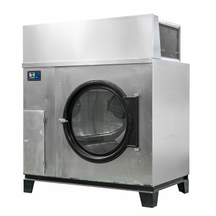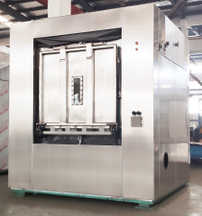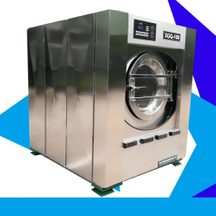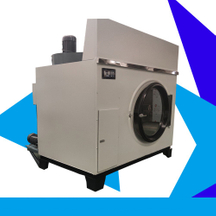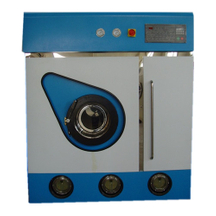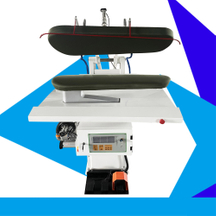Medical linen: New frontiers in infection control and prevention
Staff must adhere to hospital policy and regulatory guidelines to prevent surgical site infections. However, medicaliles are items that can be overlooked as potential contaminants. When the operating room team members transport a patient to the operating room, the bed sheets and transport cart may contain a of microorganisms. Textile surfaces can serve as reservoirs for microorganisms that can be transferred to healthcare providers, patients, and the environment. These pathogens can infect, especially those who are immunocompromised or have a direct entry (e.g., catheter, incision site).
During the peri period, surgical patients like to receive a clean blanket from a warm place. The perioperative staff consider the laundered linens used in the operating room as clean—but how? This paper focuses on linens and scrubs and ways to clean these materials to ensure that the laundered linens are clean and will not spread pathogens or cause outbreaks infection.
Humans live in a biodiverse world in which microorganisms have always been present, such as naturally colonizing the intestines and living on the. Some microorganisms become pathogenic and invade and destroy tissues or cause infections. Microorganisms can remain in an active state, hidden in a biofilm. Biofil grow and thicken as layers are established. They are tough structures that are difficult for biocides to eradicate, either unable to penetrate the membrane or being neutralized by the. Biofilms can form on laundry equipment and potentially contaminate linens. Proper hand hygiene frequently and wearing appropriate personal protective equipment can reduce the spread of microorganisms.
Healthcare textile contamination
Textiles are items made from fabric and can include privacy curtains, scrubs, lab coats, reusable surgical gowns and drapes, gowns, and other textiles (e.g., bed sheets, pillowcases, blankets). Microorganisms can accumulate and proliferate on textiles. For, privacy curtains in the maintenance area or postanesthesia care unit are frequently used for long periods (e.g., weeks or months) without being cleaned, and during time, microorganisms on their surfaces can proliferate extensively. Healthcare workers routinely use their hands to open and close the curtains on the same curtain panel, or hands contaminate curtains, or their hands are contaminated by the curtains and then may touch patients.
Studies have found that privacy curtains can be contaminated with a variety of microorganisms In one culture study of 50 privacy curtains, researchers found VRE on 21 curtains (42%), MRSA on 11 curtains (22%) C. difficile on 2 curtains (4%), enterococcal positivity 43.9%, and various aerobic gram-negative bacilli positivity 2.2%.
Although the fabrics are either cleaned in the hospital or by an outside laundry company contracted for this purpose, the extent to which this cleaning removesorganisms is unknown. Fabric surfaces serve as reservoirs for microorganisms that can infect patients, particularly when contaminated with bacteria, viruses, or fungal microorganisms or path during laundering or storage that can be transmitted to healthcare providers, patients, and the environment, resulting in infection and disease.
However, increasing scientific evidence suggests that contaminated linen may play an indirect role in the transmission of antimicrobial-resistant and multidrugresistant organisms. Hospital textiles can contribute to the transmission of pathogens and colonized individuals, although the extent of their impact on HAIs is still unknown. What is known is in healthcare settings, lower microbial burden on linen is desirable, and patients at highest risk of acquiring a HAI with associated negative outcomes are those who:
•Have a entry (e.g., catheter, wound site);
•Have cancer;
•Are immunocompromised;
•Are receiving chemotherapy;
•Have received an organ transplant;
•Have sustained burns over a large part of their body or are experiencing organ failure.
Microorganisms multiply rapidly on text when there is an abundant inoculum; when the temperature and humidity are suitable; and when there is dust, spilled food or liquid, vomit, feces, urine,, dead skin cells, or other such items present. Microorganisms residing on linens will grow in a warm, moist environment and may cross-contaminate the hands of personnel.
Depending on the microorganism, it can survive on textiles from one day to several weeks, sometimes more than three. The rate of transfer from fabric to a person or other objects also varies with a different set of variables, such as the microorganism (e.g., strain) the favorable environmental factors that maintain the microorganism, and the transfer rate decreases when the fabric or the hands of HCWs are dry.
Common microorganisms on hospital textiles include gram-negative bacteria, coagulase-negative staphylococci, bacilli, Staphylococcus aure and MRSA, Clostridium difficile, VRE, Acinetobacter baumannii, and skin flora. Of the common pathogens causing HAI Clostridium difficile was most often identified (12.1%); S. aureus was the second most common (10.7%), followed bylebsiella pneumoniae and Klebsiella oxytoca (9.9%) and E. coli (9.3%). In an audit maintenance management practices at a 700-bed teaching hospital, the authors found that previously laundered linen that was stored in a closet and on hand trucks used for transporting lin were contaminated with coagulase-negative staphylococci, bacilli (i.e., mold), and viruses. Hospital personnel should practice vigil screening and cleaning practices in their laundry or their contracted laundry company to ensure that microorganism numbers are as low as possible.
Investigators in the United Kingdom studied as a source of sporadic C. difficile outbreaks and examined the survival of C. difficile spores on naturally contaminated linen before and after washing at 6°C (149°F) for at least 10 min or at 71°C (159.8°F) for at least min. They found that combining heat and chemistry was more effective at purifying the linens than using heat alone. They also found that even after industrial-level washing and disinf with detergent and hot water at a commercial healthcare laundry, sufficient numbers of C. difficile spores remained on the textiles to pose a risk for transmission.
Their conclusion was that insufficient water temperature and disinfection conditions, as well as the time that textiles spend at various stages of the washing, may result in sporadic outbreaks of C. difficile. Another study assessing the potential for cross-contamination of hospital linens during the laundering process found C. difficile spores can survive in typical washing temperatures and chemical treatments and can cross-contaminate other washed textiles.
In another study involving text, researchers deliberately contaminated 19 bed sheets and 17 duvet covers with microorganisms and accidentally discovered that even after cleaning, the “clean” bedding, when newly up on patients’ beds, was still contaminated.
The researchers concluded that bacterial transfer was most likely to occur on clothing worn by healthcare workers when caring for patients, example, by touching patients and environmental surfaces that come into contact with sheets while making the bed, and also suggested that contamination could occur at any point during the washing and storage processes. results of another study indicated that Staphylococcus aureus could survive a 10-minute drying cycle at 54°C (1292°F), and Klebsiella pneumoniae could also survive washing without a mechanical drying cycle included.
Linen laundry production cycle 
The two microbial goals in the laundering process include the elimination or inactivation of path on linens and in the washing and drying equipment and the prevention of the formation of biofilms in the interior of the washing machines and to prevent recontamination of theiles. Healthcare personnel should expect the removal of all soil from linens through cleaning and the elimination or drastic reduction in microbial numbers. Laundry personnel should conscientiously follow regulatory from national organizations, such as the Occupational Safety and Health Administration, or from laundry industry certification organizations, such as the International Organization for Standardization, the Healthcare Laundry Accreditation, to help prevent HAI.
The acceptable limit for post-drying linen contamination is less than 20 colony-forming units per square decimeter and the of organisms, including Staphylococcus aureus and Escherichia coli. Cleaning companies should provide standard cleaning, rinsing, drying, storing and transporting of textiles based on guiding principles of sanitation, common sense, and consensus from the CDC and the Association for Professionals in Infection Control and Epidemiology Healthcare Infection Control Practices Advisory.
NO.1
Cleaning
Transportation personnel deliver hospital linens in sealed bags to the dirty side of laundry operation, and the launder personnel sort them by category (i.e., sheets, blankets, surgical gowns, patient gowns), according to the protocol for specific facility, prior to cleaning or after cleaning. During the cleaning phase, soil is removed, and heat, chemicals, and physical actions are used to remove or kill microorganisms The water temperature should be 71°C (159.8°F) for at least 25 minutes to effectively kill microorganisms.
Chem and disinfectants are also used during the cleaning process to suspend soil and help eradicate microorganisms. Disinfectants that kill and inhibit the growth of microorganisms alcohols, quaternary ammonium cations, aldehydes; and oxidizing agents such as sodium hypochlorite or calcium hypochlorite (bleach) hydrogen peroxide and iodine, which can lead to bacterial resistance over time. In the last step of the washing cycle (rinse), a weak acid is automatically added neutralize the alkali in the water, the bleach or the detergent and to kill microorganisms that are sensitive to rapid changes in the environmental pH.
The parameters must be balanced during the washing cycle:
• Water temperature;
• Duration of the cleaning and rinsing cycles;
• Mechanical agitation;
• Types and amounts of detergent and disinfectant.
If one of the parameters is not sufficient, one or more of the other parameters must be increased to achieve hygienic clean result. If the water is not hot enough or if the cleaning or rinsing cycle is too short, microorganisms may survive the washing cycle. one study, a reduction of microbial contamination was satisfactory when a large amount of bleach was used at lower water temperatures (i.e., 22°C [1.6°F]).
The laundry manager should ensure that washers are properly cleaned and maintained on a regular basis to prevent the build-up of biofilms An outbreak of an infection occurred in a hospital because microorganisms had already been multiplying in the sealed washers. When large numbers of microorganisms survive the washing cycle, they be transferred to other items in the same washing cycle or during drying.
NO.2
Drying
Drying linens at high temperatures is another method to kill any residual microorganisms. use dryers or mechanical ironing and drying to dry textiles. Appropriate drying temperatures, cycle times, and load capacity (i.e., size or weight) on the type of fabric. Synthetic fibers (e.g., polyester, polyester blends) require less drying time and lower temperatures than natural fibers (e.g.,). Dryers also require regular maintenance and temperature checks to ensure they are functioning correctly.
NO.3
Transportation and Storage
Environmental services supervisors in and surgery centers and laundry managers in commercial laundry operations take control measures for the transportation and storage of clean linens. Establish textile cleaning, storage, and handling requirements based on evidencebased sources (e.g., CDC, Association for the Healthcare Environments, and/or jurisdictional local or state authorities).
Clean linens should be transported storage areas in closed boxes or carts and conveyor belts that are clean, free of soil, dust, and microorganisms (e.g., mold), and dry Linens must be completely dry before they are bundled or covered, as residual moisture can lead to microbial growth. Laundry areas should regularly disinfect and air dry transport and storage (e.g., trash bins, carts, shelves) to avoid contaminating clean linens.
Researchers have found that clean linen and linen carts can become contaminated with Staphylococcus aureus MRSA.23 The multiple people who handle linen and the variety of equipment used contribute to the numerous contact points involved in transporting and storing linen. These contact points include moving the from the laundry area to the central storage area. For healthcare facilities that contract with commercial vendors, linen transport also includes vehicle transport from the laundry facility to the healthcare facility, transport from receiving dock to the central storage area, and transport from the central storage area to the patient-care unit and satellite storage carts.
The greatest risk of contamination occurs during transport of clean linen from the laundry to the hospital. Separate vehicles (e.g., trucks, vans, hand carts) should be used for the transport of clean contaminated textiles. Clean and infected textiles can be transported in the same vehicle if a physical barrier or space divider is in place and it has been demonstrated to be effective in contamination. Supervisors should ensure that hand carts, trash bins, plastic containers or bags, and trucks or vans that transport textiles are cleaned on a regular basis. Upon at the hospital, the transport personnel place it in the loading dock and then transport it to a central location for storage.
Then, environmental services personnel will distribute and store linen in the clinical units. All storage areas should be maintained in a clean condition and linen should be kept dry and free of dirt and body substance contamination (hands, arms, front of clothes).
Providing hygienic clean linen is a complex task. Laundry managers of commercial laundry facilities and environmental services staff of healthcare facilities should that linen storage areas, transport equipment, and transport vehicles are clean to prevent these items from becoming contaminated. They should also inspect the cleanliness of the ventilation system. How frequently transport or trash bins need to be cleaned is also important because it determines whether the lowest shelf in the transport vehicle is secure and covered to ensure that the wheels of the transport vehicle will not sprinkle dust onto the garments.
NO.4
Linens can become contaminated during use.
Microorganisms on linens can become airborne and on surfaces to contaminate them. Transfer may occur when making the operating bed. For example, MRSA can become a bioaerosol, contaminating the air during the bedmaking process and leading to respiratory tract infections.
Researchers collected baseline air samples from the environment surrounding 13 patients currently infected or colonized with MRSA. They then collected air samples during bed making and found that the MRSA counts (i.e., particulate matter collected on air samplers) were significantly (about 25fold) higher than baseline MRSA counts (P = .01). One hour later, the MRSA counts on the swab were lower than before making the bed
The researchers also found that aerosolized MRSA particles colonized in the patients’ nares or entered the lungs. Environmental contamination caused by the patients was also a of a study of an isolation room for 25 patients with MRSA colonization or infection. More than half of the surfaces sampled (including bed sheets) were positive for MR, indicating that the most commonly contaminated surfaces in the environment of patients with MRSA are hospital gowns, the front of HCWs’ garments, and bed sheets.
In the literature review, linens were identified as a potential cause of transmission of MRSA, P. aeruginosa, and VRE.52 Other researchers have also able to isolate the pathogens B. thermus, strain P. aeruginosa, and strain B. cepacia from the air during changing bed linen. Direct transfer also occur when individuals come into contact with contaminated items, followed by contact with another surface or individual (i.e., indirect transfer), which then infects that surface individual. Although hand hygiene ultimately stops the spread of infection, it alone cannot stop the “hospital infection cycle.”
Conclusion
Although providing clean linens to the operating room seems straightforward, the process of washing, drying, folding, and storing them is more complex. This paper provides evidence from a variety of studies that document the correlation between contaminated linens and HAIs. So much of what we do during the perioperative periodolves around maintaining asepsis and using sterile technique to prevent surgical site infections. Perhaps it is time we took a closer look at linens and their role in infection control and.
Facility managers should ensure that routine cleaning measures are in place when linens are being washed, dried, transported, and stored, that proper equipment maintenance is being followed and that appropriate processes are in place to minimize the potential for creating a contaminated environment and to reduce the introduction of contaminants. Facility managers should also explore new technologies that focus reducing HAIs through the elimination of microorganisms. It is time to question what happens to linens in laundry facilities, hospital linen rooms, and operating rooms. The more hands touch the linens, the more bodies that are held, the more potential sources of contamination that are introduced. This is a frontier area that is mostly overlooked by healthcare providers










